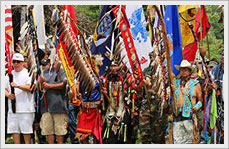Fisheries
See below for the Annual Harvest Summaries for Spearing/Netting.
2021 Spring Harvest Summary
2020 Spring Harvest Summary
2019 Spring Harvest Summary
2018 Spring Harvest Summary
2017 Spring Harvest Summary
2016 Spring Harvest Summary
2015 Harvest Summary
The Fisheries Department is responsible for collecting data to manage fisheries resources within the 1854 and 1837 Ceded Territories. We collect and analyze field data that is used to gain further insight into the dynamics of fish populations. Since 1994, Fond du Lac has regularly conducted spring and fall electrofishing surveys, targeting adult and age-0 walleyes. Spring surveys target adult walleye with the goal of calculating a population estimate and to be able to compare that estimate with MN DNR gill net catch data. Fall electrofishing surveys target age-0 and age-1 walleyes. The data is used to help biologists and managers gauge the success or failure of walleye spawning success, and to gain insight into the dynamics of walleye populations in the future.
In addition to working with game fish, Fond du Lac also conducts many non-game fish surveys. The Fond du Lac Fisheries Department cooperates with local area offices of the MN DNR in an effort to complete surveys that are no longer done on a regular basis. In 1998, Fond du Lac and the 1854 Authority completed an extensive 3-year survey of the lower Cloquet River, from the Island Lake Dam to the St. Louis River. Information collected included data on habitat features, substrate types, aquatic plants, aquatic invertebrates, and, of course, fish. A copy of the report is available, contact our office to request a copy in the mail.
In July 2000, Fond du Lac and the 1854 Authority began preliminary work on three other rivers. Preliminary work focused on identifying and marking habitat features, including: pools, riffles, runs, and rapids; tributaries, drainages, and adjacent wetlands; erosion sites; and evidence of beaver activity. The three rivers investigated were the Pike and Sandy Rivers, that both eventually flow into Lake Vermillion, and a portion of the upper Cloquet River, from Indian Lake to Island Lake. We established sampling stations on the upper Cloquet River, and began detailed assessment activity during the summer of 2001.
The Fond du Lac Fisheries Section also cooperates with the Fond du Lac Environmental Program, assisting with stream surveys on the Fond du Lac Reservation. These surveys are used to establish base-line data on the fish and aquatic invertebrate communities present in each stream system. Fish and invertebrate communities can be monitored through time to determine whether these communities are changing, and indicating changes in water quality.
The Fond du Lac Fisheries Department works with other agencies in cooperative efforts to manage the fisheries resources. One such project is on the Dark River near Chisolm, MN. Here, Fond du Lac has teamed up with the MN DNR, Potlatch Corp., the U.S. Forest Service,and Trout Unlimited to manage a brook trout fishery through the removal of a high-density beaver population. The beavers are being removed not only through physical trapping, but also by changing the surrounding riparian forest type. Tree species preferred by beaver, notably aspen, have been physically removed by Potlatch foresters up to 300 feet from the river bank. The area has been replanted with tree species not generally preferred by beaver, notably red pine and white spruce. The goal is to deter beaver from this portion of the Dark River. Find out more about this project at the American Tree Farms web site, under the “Flagship” Projects in the Shared Streams Section. Click on the Dark River, MN.
In addition to collecting field data, the we are also responsible for managing harvest activities for the Band, particularly intensive harvest in the 1837 Ceded Territory. Netting and spearing activities by the Band are actively managed and monitored each spring, with harvest numbers reported daily to the State of Minnesota. A lot more work goes into managing Tribal fishing than most people are aware of.
Associated Off-Site Links
Minnesota DNR
1854 Authority
American Tree Farms








